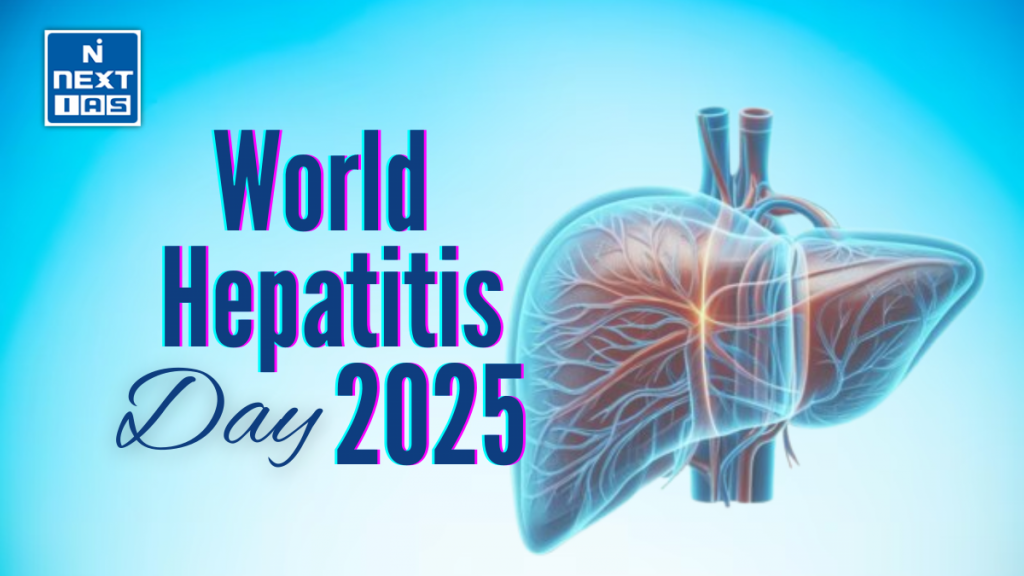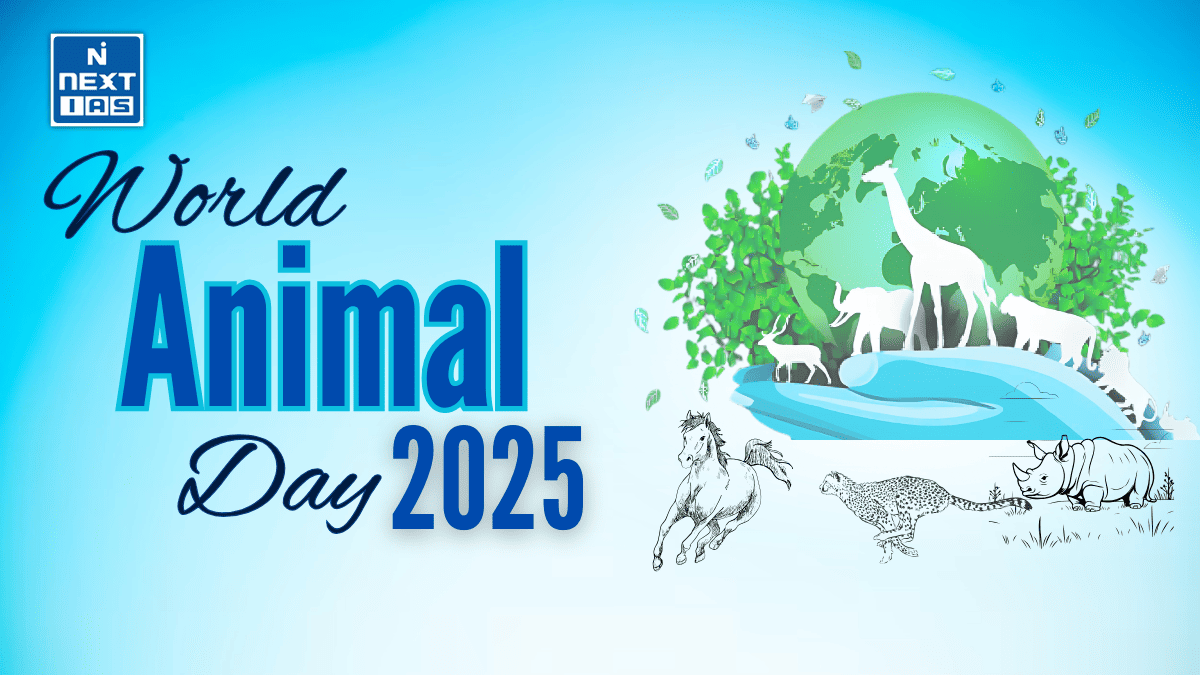
World Hepatitis Day is observed on July 28 every year. A global health campaign to raise awareness among the masses about viral hepatitis: its prevention, testing, and treatment. This awareness campaign attempts to educate those people who are being stigmatized, thus getting people together to act toward the worldwide elimination of hepatitis as a public health threat.
What is Hepatitis?
- Hepatitis is the swelling of the liver caused chiefly by viral infections, but toxins, drugs, and autoimmune reactions could also be probable causes.
- Hepatitis viruses mainly are five types – A, B, C, D, and E-based on differences in their transmission, severity, and long-term consequences.
- Hepatitis A and E are commonly spread through the ingestion of contaminated food and water and tend to cause an acute phase of short-term illness.
- The hepatitis B, C, and D viruses, on the other hand, are mainly transmitted though blood or bodily fluids and could set up acute and chronic infections, to be potentially lethal through cirrhosis and liver carcinoma if untreated.
- Hepatitis B and C-infected persons rarely have obvious symptoms, making it extremely crucial for early diagnosis to undergo periodic screening.
- In addition, vaccines against hepatitis A and B effectively prevent hepatitis, and more recently, antiviral treatments give hope to curing and controlling chronic hepatitis.
Objectives of World Hepatitis Day 2025
- The goals of World Hepatitis Day 2025 are to enhance consciousness worldwide on viral hepatitis while promoting its prevention and working toward the elimination of viral hepatitis as a public health threat by 2030.
- It endeavors to get information across to individuals and communities about the modes of transmission, risks, and grave health outcomes of viral hepatitis, including liver cancer and cirrhosis.
- It is important that the day encourages testing and vaccination of people where appropriate, stigmatization and discrimination reduction, and improving access to diagnosis and treatment.
- On this day in 2025, emphasis is placed on the need to continue strengthening health systems, while also ensuring hepatitis services are integrated into primary care and successfully reaching the underserved and those at-risk population groups.
- Advocacy views remain toward drilling governments, health organizations, and the public to ensure the adoption of evidence-based policies, the expansion of vaccination and harm-reduction programs, and investment in research and innovation.
- Overall, the day calls for collective global action to ensure that hepatitis prevention, care, and treatment are accessible, equitable, and prioritized in public health agendas.
Key Themes of World Hepatitis Day 2025
- Key themes of World Hepatitis Day 2025 emphasize the need to speed up global efforts toward eliminating viral hepatitis as a public health threat by 2030.
- Giant patches of the campaign focus more on early testing; wider testing; increased treatments; and governments, therefore, providing universal vaccinations as per World Health Organization recommendations for elimination.
- “Take Action. Test, Treat and Vaccinate” is at the heart of this year’s messaging with a rallying call for individuals, communities, and policymakers to take practical steps from awareness.
- Attention is placed on access for marginalized populations and high-risk groups, with a focus on overcoming barriers, including stigma and limited access to healthcare, as well as weak awareness of hepatitis prevention and treatment.
- Themes also emphasize new innovations in diagnostics and therapeutics, integrating hepatitis services into primary health care systems, and global solidarity for fair allocation of resources to close gaps in diagnosis and treatment.
- In summary, the 2025 observance propounds consolidated data-driven policies to prevent new infections, save lives, and initiate the worldwide elimination of viral hepatitis.
Activities and Events of World Hepatitis Day 2025
July 28 World Hepatitis Day 2025 will witness a constellation of events around the globe for awareness and push toward hepatitis elimination.
Public Awareness Campaigns
- A massive media outreach campaign with social media, television spots, and online webinars will engage the citizens toward awareness on hepatitis prevention, testing, and treatment.
Community Health Initiatives
- Free screening and vaccination will be held at clinics, community centers, and in open-air venues in high-risk or underserved areas.
Workshops and Webinars
- Sessions for healthcare providers, teachers, or community members will provide information on risk factors, prevention strategies, and the benefits of early diagnosis.
Policy and Advocacy Meetings
- In addition to stakeholder meetings among governments, NGOs, and patient groups, there will be pressure on policy changes, funding, and healthcare infrastructure.
Storytelling and Stigma Reduction
- Patient testimonials and success stories will share real-life impacts, helping to reduce hepatitis stigma.
Collaborative Global Events
- International organizations will partner to share best practices, launch research initiatives, and recognize exemplary efforts in the fight against hepatitis.
These combined actions will amplify the global message: hepatitis can be prevented, treated, and ultimately eliminated with collective effort.
Observance Around the World of World Hepatitis Day 2025
- The Worldwide Hepatitis Day 2025 is held on the 28th of July. On this occasion, varying kinds of activities are organized at an international level to spread information on viral hepatitis prevention, testing, and treatment.
- All countries across the globe have public health campaigns, major education programs, and community events. The campaigns are supported by organizations such as the World Health Organization and the World Hepatitis Alliance.
- Screening camps for free, vaccination campaigns, and awareness-building seminars are arranged in big cities and remote rural areas for the benefit of high-risk and at-risk communities.
- The message is reinforced through the use of social media and other digital outlets to try to break down barriers and encourage people to get diagnosed and treated.
- Governments, NGOs, and patient groups push toward improving access to diagnosis, affordable treatments, and strong national policies in line with the goals for hepatitis elimination by 2030.
- Through success stories, testimonies of survivors, and the recognition of innovations in treatment, World Hepatitis Day acts as a major international catalyst driving growth in public health and unity.
Main Challenges of World Hepatitis Day 2025
- Major challenges on 2025 World Hepatitis Day revolve around the enduring barriers to viral hepatitis elimination as a global health threat.
- Almost all barriers include deficiency in awareness and stigma, especially in marginalized or underserved populations, resulting in low rates of testing and diagnosis.
- Some persons go untreated as they never knew of their state due to very mild symptoms or the absence of symptoms altogether.
- Unequal access to vaccination and state-of-the-art antiviral therapy exists, with the highest prices being asked and limited availability in certain resource-poor settings.
- Some other impediments caused by a weak health system are low financing by means of inadequate funds and data, inconsistent implementation of WHO guidelines on viral hepatitis, low capacity, and resources for viral hepatitis testing and treatment.
- Preventive measures are also weak and lacking in coverage of birth-dose hepatitis B vaccinations and harm reduction interventions for hepatitis C.
- Conquering all these barriers requires international cooperation, investments in health infrastructure, enhancement of public awareness, screening, and increased care delivery, mainly in high-burden areas and vulnerable populations.
Way Forward
Moving forward, more resources should be allocated toward preventive measures and diagnostics as well as treatment simplification, expanding access, particularly in heavy-burden areas, and developing global partnerships. Priorities of vaccines, early tests, and fair care will fast-track advances toward eradicating hepatitis as a public health threat by 2030.
Conclusion
The very first call of the day-thinkers would have been to prompt world public interaction for testing, treatment, and vaccination for hepatitis. Referring to awareness, increased accessibility to treatment, and strong preventive action-all can serve to hasten the COVID-hepatitis elimination as a phrase by 2030.
FAQs: World Hepatitis Day
Why is World Hepatitis Day celebrated?
World Hepatitis Day is celebrated to raise global awareness about viral hepatitis, highlight its health burden, promote prevention, testing, and treatment, and mobilize action towards eliminating hepatitis as a public health threat by 2030.
Who discovered hepatitis?
Hepatitis was recognized as a disease in ancient times, but the causative viruses were identified much later: hepatitis B virus by Baruch Blumberg in the 1960s, hepatitis A by Stephen Feinstone in 1973, and hepatitis C by Alter, Houghton, and Rice in 1989.
Read this article in Hindi: विश्व हेपेटाइटिस दिवस 2025





